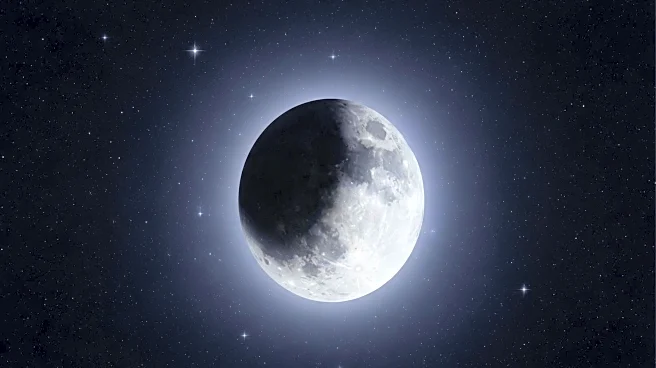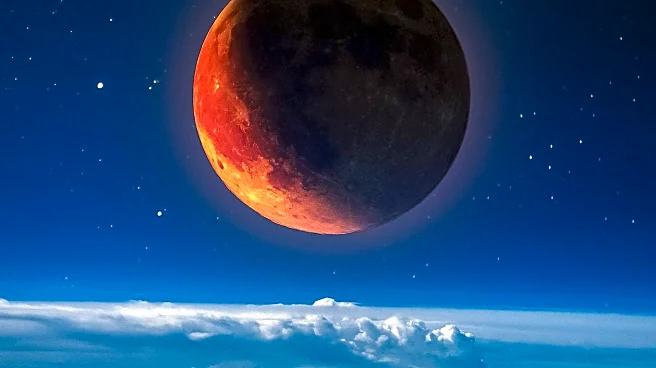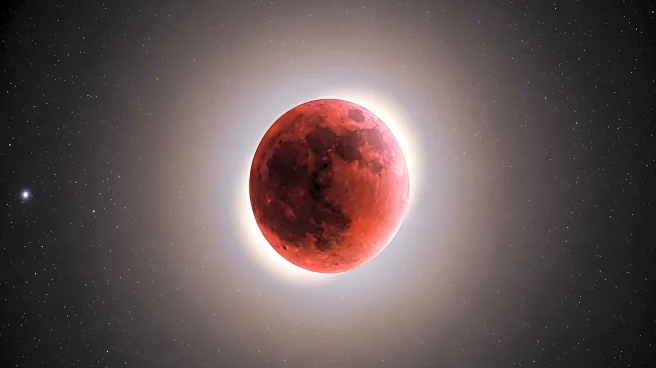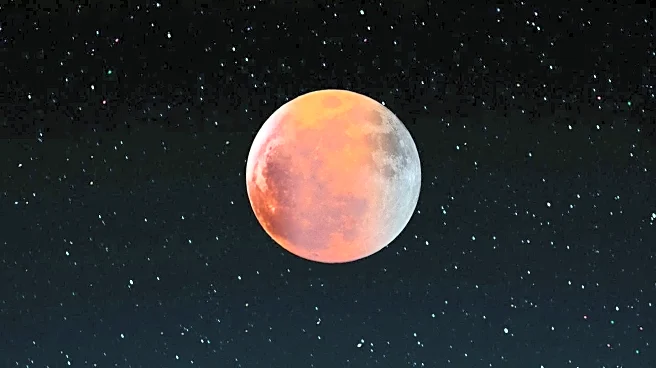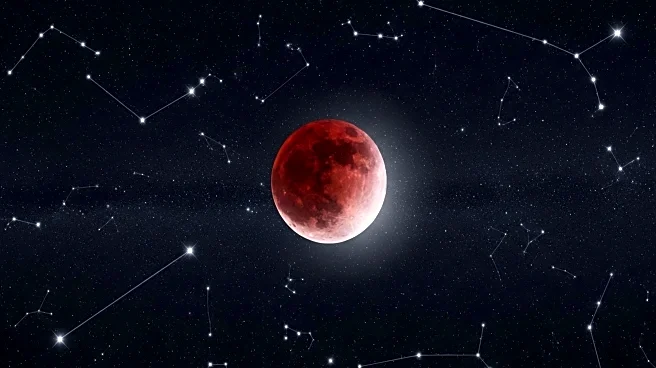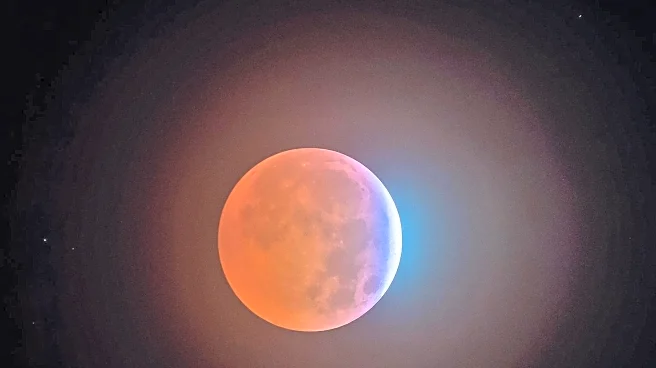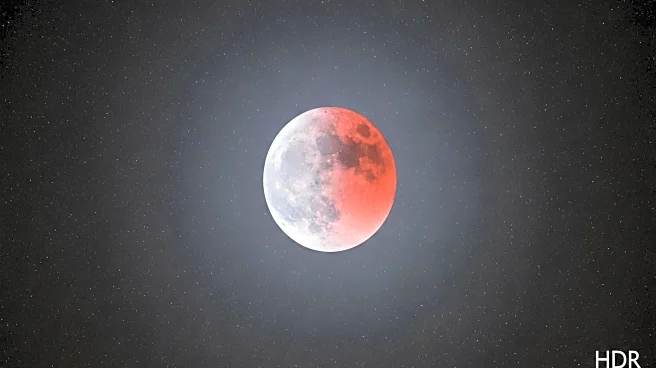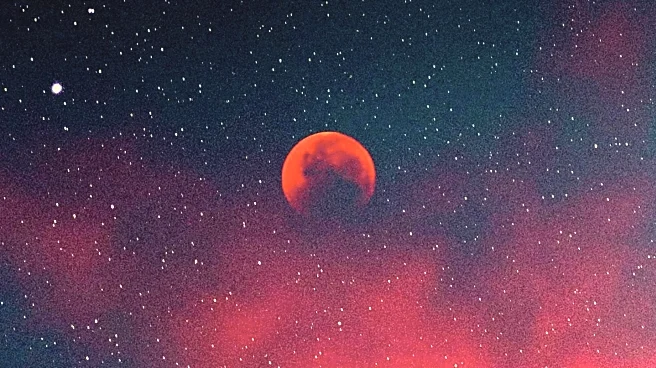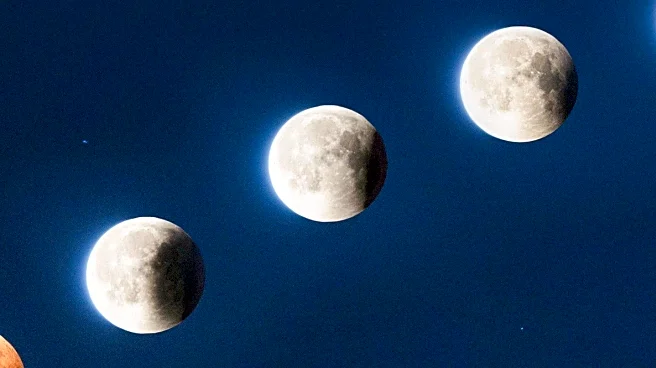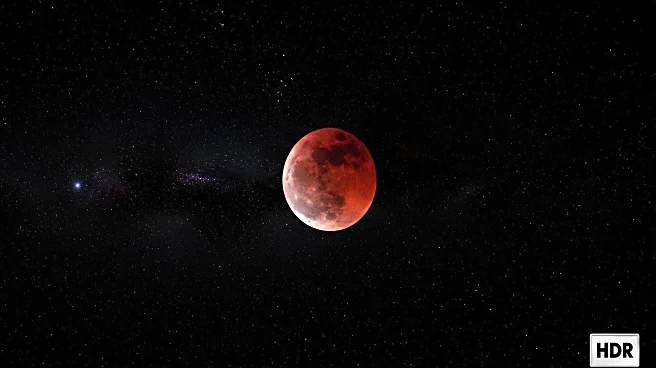What's Happening?
On September 7, 2025, a total lunar eclipse will occur, visible to over 7 billion people across the globe. This rare celestial event, known as 'Chandra Grahan,' will be observable from nearly every inhabited continent, including Asia, Africa, the Americas, and Oceania. The eclipse will feature an unusually long totality phase lasting 82 minutes, during which the Moon will take on a deep red hue, commonly referred to as a 'blood moon.' The event is significant due to its global visibility and extended duration, making it one of the most notable lunar eclipses of the decade. Astronomers and skywatchers are gearing up for this event, which offers both a visual spectacle and a research opportunity to study atmospheric conditions.
Why It's Important?
The 2025 lunar eclipse is significant not only for its visual appeal but also for its scientific implications. For astronomers, the event provides a unique opportunity to study how sunlight refracts through Earth's atmosphere, offering insights into the presence of dust, aerosols, and pollutants in the stratosphere. The varying shades of red observed during the eclipse can help track atmospheric changes over time. Additionally, the widespread visibility of the eclipse allows for a shared global experience, fostering interest in astronomy and encouraging community engagement through viewing events and online sharing. This event also highlights the importance of celestial phenomena in cultural and spiritual practices worldwide.
What's Next?
As the date approaches, astronomers and enthusiasts are preparing to capture and study the eclipse. Many will use telescopes and cameras to document the event, while others will participate in community viewing events or tune into live streams. The eclipse's visibility across multiple continents ensures that it will be a widely shared experience, potentially sparking increased interest in astronomy and science education. Scientists will analyze data collected during the eclipse to enhance understanding of atmospheric conditions, contributing to ongoing research in climate science and environmental monitoring.
Beyond the Headlines
The 2025 lunar eclipse also carries cultural significance, particularly in regions where eclipses are associated with spiritual practices. In India, for example, the 'sutak kaal' period observed before and during the eclipse involves refraining from certain activities and engaging in meditation or chanting. This cultural dimension underscores the eclipse's role in connecting scientific inquiry with traditional beliefs, highlighting the intersection of science and spirituality.
